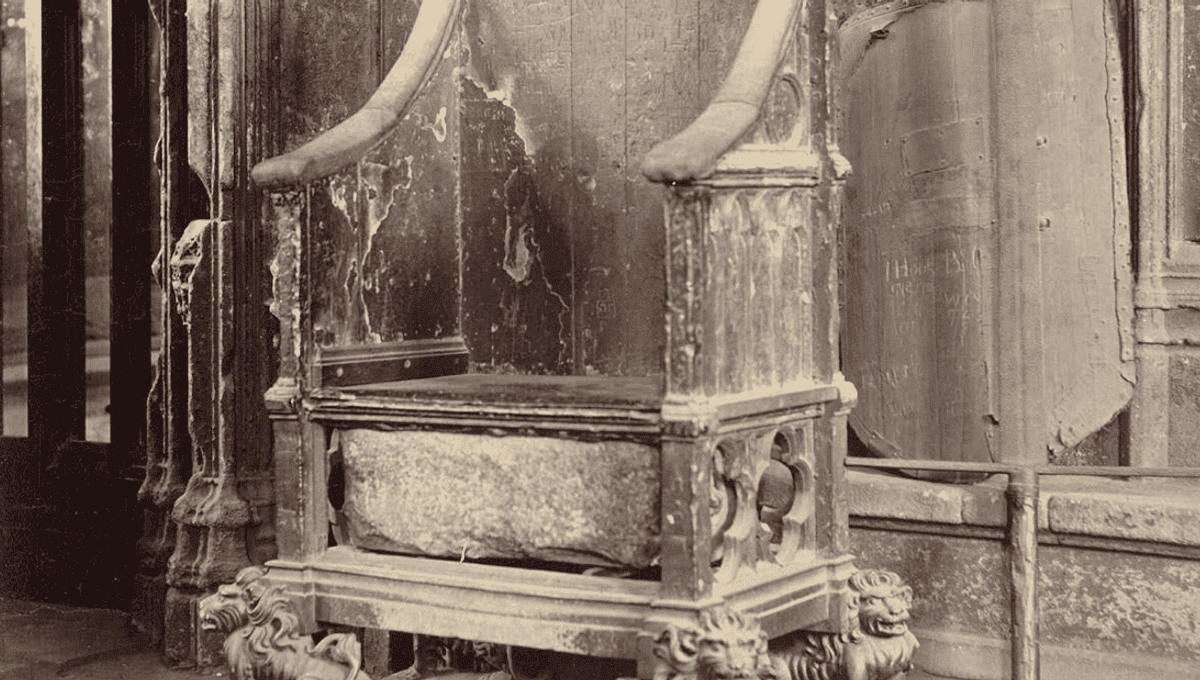
There is a piece of rock in the UK called the “Stone of Destiny” (and occasionally the far less fun “Stone of Scone”) which is involved in the ceremony of crowning new kings and queens. The big slab of red sandstone was originally used in the coronation of Scottish kings dating back to sometime around 841 CE, though its earlier origins are unknown. Now, a new analysis ahead of its role in King Charles III’s coronation next month has revealed previously hidden markings on the stone.
In the habit of kings, and England generally (see: contents of the British Museum), King Edward I of England seized the stone in 1296 after invading Scotland. The stone was brought back to England, where it was built into a throne in Westminster. Since then it has remained at Westminster Abbey, and kings and queens of Great Britain and the United Kingdom have been crowned while sitting above the stone, with cushions of course between the stone and the royal butt cheeks.
After briefly being stolen in a heist and returned to Westminster, it was moved to Scotland once more in 1996, where it remains and is looked after by Historic Environment Scotland (HES) (when it isn’t being sat on).
HES recently examined the stone more closely, ahead of Charles III’s coronation in May. The team imaged the stone and created a 3D model of it, allowing them to view it in more detail, and analyzed it using X-ray fluorescence.
On top of the stone, around the area of a dark stain, they discovered traces of copper alloy, indicating that a bronze or brass object had been placed there at some point in the past, now lost. Previously unseen markings were also found on the stone, which have the appearance of Roman numerals.
“It’s very exciting to discover new information about an object as unique and important to Scotland’s history as the Stone of Destiny,” Ewan Hyslop, Head of Research and Climate Change at HES, said in a statement.
“The discovery of previously unrecorded markings is also significant, and while at this point we’re unable to say for certain what their purpose or meaning might be, they offer the exciting opportunity for further areas of study.”
The team analyzed the stone, confirming previous research that suggested it was carved from rock found at the Scone Sandstone Formation near Perth, Scotland, and found tool marks from the original work, as well as restorative efforts which took place in the 1950s.
“The scientific analysis we’ve been able to undertake using cutting-edge techniques that weren’t previously available to us have offered some intriguing new clues to the history of the Stone,” Hyslop added.
“We may not have all the answers at this stage, but what we’ve been able to uncover is testament to a variety of uses in the Stone’s long history and contributes to its provenance and authenticity.”
The stone will meet royal buttocks once more, when King Charles III is coronated on May 6, 2023.
Source Link: Researchers Find New Hidden Markings On The Royal "Stone Of Destiny"